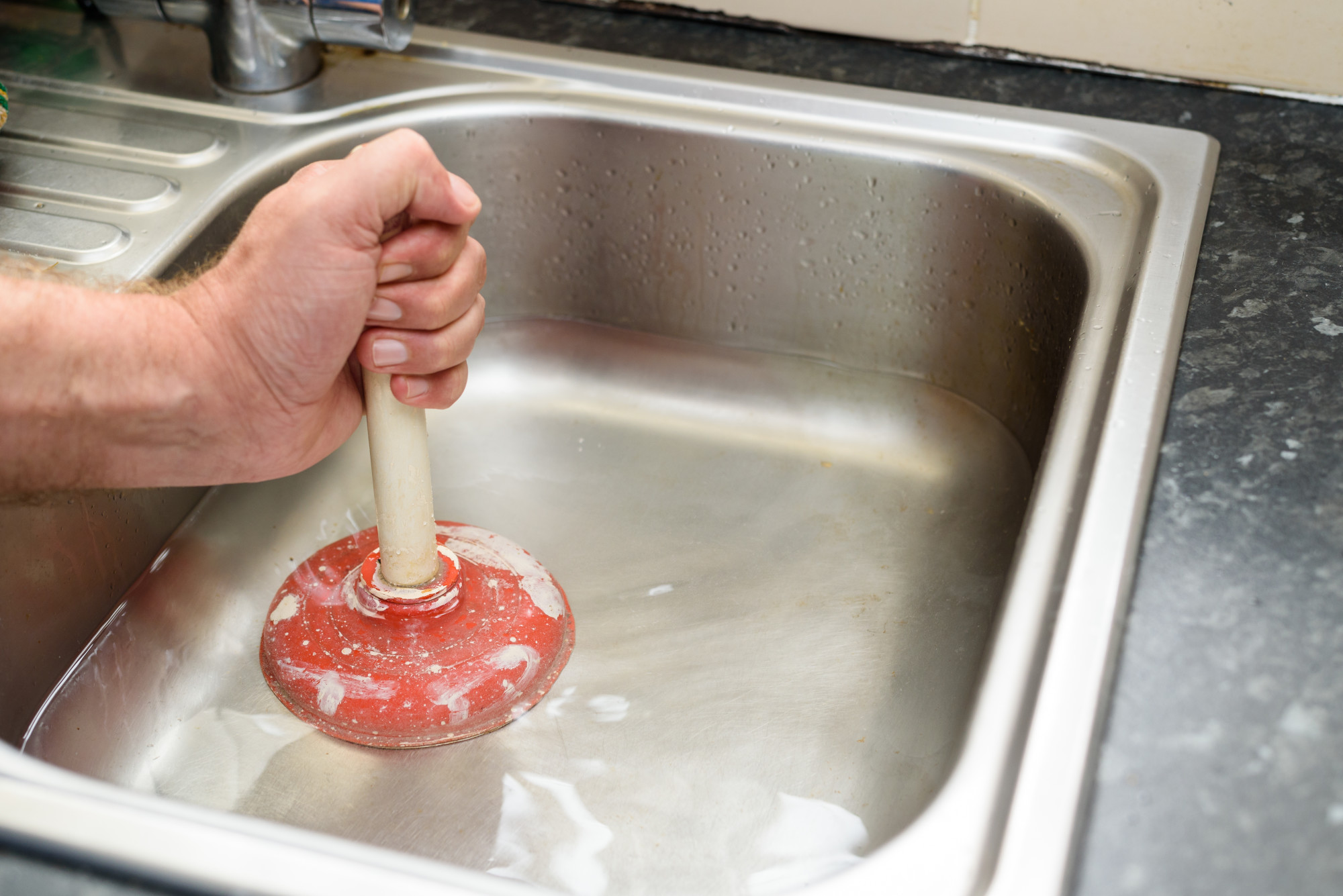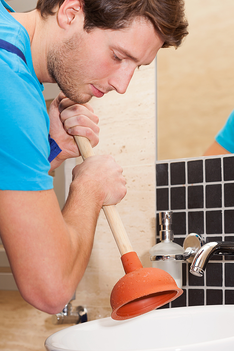Mastering Plunger and Drain Cleaners: Essential Tips
Mastering Plunger and Drain Cleaners: Essential Tips
Blog Article
On this page on the next paragraphs you will find some worthwhile insights on the subject of How to Unclog Your Sink with a Plunger.

Introduction
Appropriate maintenance of household drains is vital for protecting against clogs and making certain smooth water flow. Among the trick devices in every property owner's toolkit is the plunger, together with various drainpipe cleansers designed to take on stubborn obstructions properly. This short article explores exactly how to use plungers and drain cleaners effectively to keep your drains streaming easily.
Section 1: Comprehending Bettors
Kinds of Plungers
There are numerous kinds of plungers readily available, each made for different sorts of drains and obstructs. One of the most typical types include cup plungers, flange plungers, and accordion plungers.
How Plungers Job
Bettors work on the principle of producing stress and suction to dislodge obstructions. When properly used over a drainpipe, they create a vacuum cleaner that can pull out particles or break up clogs.
Choosing the Right Bettor
Choosing the appropriate plunger depends on the sort of drain and the nature of the obstruction. Mug plungers are optimal for sinks and bathtubs, while flange bettors are much better suited for toilets because of their style.
Typical Errors with Plungers
Avoiding these mistakes guarantees efficient plunging: incorrect seal around the drain, insufficient pressure, and unclear bordering debris.
Section 2: Using Plungers Properly
Prep work
Before plunging, ensure the bettor covers the drain completely and creates a tight seal. Clear any type of visible debris around the drainpipe opening.
Technique
Beginning with mild diving movements to develop suction. Increase pressure slowly, utilizing a constant rhythm. Repeat as required until the drainpipe removes.
Repairing Tips
If diving doesn't function, attempt changing the seal, using oil jelly for a better seal, or using a different sort of bettor.
Area 3: Understanding Drainpipe Cleaning Company
Sorts Of Drainpipe Cleaning Company
Drain pipes cleansers can be chemical or chemical. Chemical cleaners use strong chemicals to dissolve clogs, while enzymatic cleaners make use of natural enzymes to break down organic matter.
How Drainpipe Cleansers Job
Chemical cleaners react with blockages to dissolve them, while chemical cleaners break down natural materials like hair and oil without harming pipes.
Safety and security Factors to consider
Always wear gloves and eye security when using chemical drain cleaners. Ensure adequate air flow and comply with producer guidelines thoroughly.
Eco-Friendly Alternatives
Take into consideration utilizing vinegar and cooking soft drink or enzyme-based cleaners for environment-friendly alternatives that are more secure for pipes and the atmosphere.
Area 4: Making Use Of Drainpipe Cleaning Company Properly
Application Strategies
Put chemical cleaners directly into the drain opening. Allow them to work for the recommended time before flushing with warm water. Chemical cleaners need to rest over night.
Precautions
Prevent mixing various kinds of cleaners, as this can generate poisonous fumes. Never ever use chemical cleaners together with a plunger, as splashing can occur.
Managing Stubborn Obstructions
For persistent clogs, think about utilizing a pipes serpent or calling a specialist plumbing to stop damages to pipelines.
Verdict
In conclusion, understanding exactly how to utilize plungers and drain cleansers successfully is essential for maintaining healthy and balanced pipes systems. By picking the right devices and strategies, house owners can tackle small clogs and avoid significant plumbing concerns down the line.
How To Properly Use A Plumbing Snake To Clear Drains
When any drain clogs in our home arise, we tend to gravitate toward the plunger and little else. In cases where the plunger and its vacuum-created pressure are not able to clear clogs, many immediately move to harmful chemicals or simply call their plumber to fix the issue.
we’re happy to help with all drain cleaning needs and concerns. This includes informing you on a few other home remedies you may have at your disposal for minor to moderate clogs, one of which is the use of a plumbing snake. Many people have never used one of these before – let’s go over the steps to take when your drain clogs and you have a plumbing snake available.
Attempt Plunger Use
The first step here, as we noted above, should indeed be to grab your plunger when you notice a drain clog and attempt to resolve it this way. If you’re unsure how to use a particular type of plunger, our plumbers can answer any questions you have. If this doesn’t do the trick, however, you move on to the snake.
Locate And Prepare Snake
A plumbing snake is a metal or plastic device that’s generally about a quarter of an inch thick. It’s design with significant extensions, meant to reach down into your clogged drain and push the clog out. Snakes also contain drain augers that will latch onto and push stubborn blockages.
If your plunger doesn’t clear a clog, locate your snake and bring it to the drain in question. We also recommend keeping a bucket nearby to collect the clog once you pull it out, plus we’d advise wearing goggles and possibly protective gloves.
Feed Snake
Once you’re ready to go, feed the snake slowly down the drain, using the crank device it comes with to keep it moving until it finds the clog. Once this happens, much of the clog will be latched onto the coil so you can pull it out, while the rest will simply break up and flow downward.
Detach Debris
Remove the snake slowly from the drain, and once you’ve done so, pick off any debris that’s stuck to the coil. This is another area where wearing gloves is a must.
Flush Drain
Finally, take a few minutes to ensure the snake has done its job correctly. If you’ve been using it on a toilet, flush the toilet a couple times and make sure everything flows well. If you’ve used it on a different drain, flush it with some room temperature water.
https://www.mybuddytheplumber.com/blog/how-to-properly-use-a-plumbing-snake-to-clear-drains/

Application Strategies
Put chemical cleaners directly into the drain opening. Allow them to work for the recommended time before flushing with warm water. Chemical cleaners need to rest over night.
Precautions
Prevent mixing various kinds of cleaners, as this can generate poisonous fumes. Never ever use chemical cleaners together with a plunger, as splashing can occur.
Managing Stubborn Obstructions
For persistent clogs, think about utilizing a pipes serpent or calling a specialist plumbing to stop damages to pipelines.
Verdict
In conclusion, understanding exactly how to utilize plungers and drain cleansers successfully is essential for maintaining healthy and balanced pipes systems. By picking the right devices and strategies, house owners can tackle small clogs and avoid significant plumbing concerns down the line.
How To Properly Use A Plumbing Snake To Clear Drains
When any drain clogs in our home arise, we tend to gravitate toward the plunger and little else. In cases where the plunger and its vacuum-created pressure are not able to clear clogs, many immediately move to harmful chemicals or simply call their plumber to fix the issue.
we’re happy to help with all drain cleaning needs and concerns. This includes informing you on a few other home remedies you may have at your disposal for minor to moderate clogs, one of which is the use of a plumbing snake. Many people have never used one of these before – let’s go over the steps to take when your drain clogs and you have a plumbing snake available.
Attempt Plunger Use
The first step here, as we noted above, should indeed be to grab your plunger when you notice a drain clog and attempt to resolve it this way. If you’re unsure how to use a particular type of plunger, our plumbers can answer any questions you have. If this doesn’t do the trick, however, you move on to the snake.
Locate And Prepare Snake
A plumbing snake is a metal or plastic device that’s generally about a quarter of an inch thick. It’s design with significant extensions, meant to reach down into your clogged drain and push the clog out. Snakes also contain drain augers that will latch onto and push stubborn blockages.
If your plunger doesn’t clear a clog, locate your snake and bring it to the drain in question. We also recommend keeping a bucket nearby to collect the clog once you pull it out, plus we’d advise wearing goggles and possibly protective gloves.
Feed Snake
Once you’re ready to go, feed the snake slowly down the drain, using the crank device it comes with to keep it moving until it finds the clog. Once this happens, much of the clog will be latched onto the coil so you can pull it out, while the rest will simply break up and flow downward.
Detach Debris
Remove the snake slowly from the drain, and once you’ve done so, pick off any debris that’s stuck to the coil. This is another area where wearing gloves is a must.
Flush Drain
Finally, take a few minutes to ensure the snake has done its job correctly. If you’ve been using it on a toilet, flush the toilet a couple times and make sure everything flows well. If you’ve used it on a different drain, flush it with some room temperature water.
https://www.mybuddytheplumber.com/blog/how-to-properly-use-a-plumbing-snake-to-clear-drains/

As a person who reads on Tips on How to Effectively Use a Plunger, I figured sharing that piece of writing was worth the trouble. If you enjoyed our page please do not forget to pass it around. I am grateful for being here. Don't hesitate to visit our site back soon.
Book My Estimate Report this page